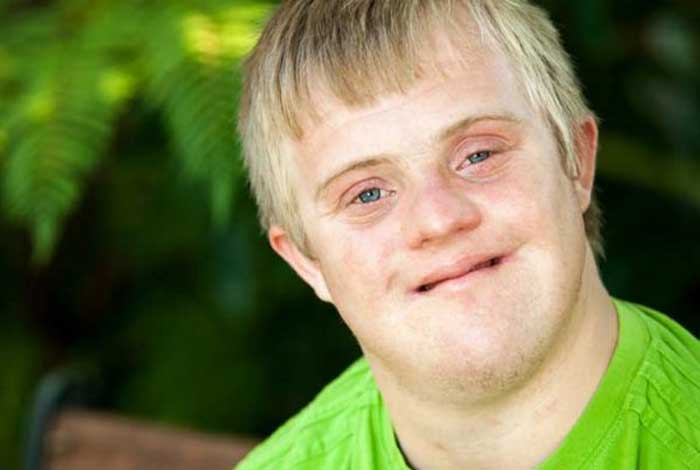
Overview and Facts
Aarskog Syndrome, also known as Aarskog—Scott syndrome is a rare genetic disorder that affects the development of body parts. Generally, this condition is known to affect males, but it may affect females as well. People with Aarskog syndrome have distinct facial features like eyes that are widely spaced (hypertelorism), small nose and extended area between nose and mouth. These people have short height or stature; particularly during childhood. However, during puberty, they start catching up with their peers as far as height is concerned. Affected persons also have short fingers that are curved. Other abnormalities like defect in heart and cleft lip and a cleft palate are also seen in people with this genetic disorder.
People with Aarskog also develop differently intellectually. In rare cases, they have normal intelligence. Generally, they have mild learning difficulties and behavioral problems. Severe intellectual disability may also be noted in some cases.
Men with Aarskog syndrome have shawl scrotum, i.e., the scrotum surrounds the penis instead of hanging below. Sometimes, they have undescended testes. Aarskog is a rare X-linked genetic disorder. It means, the condition is inherited on the X-chromosome – one of the two chromosomes that sex determine sex.
This disorder was first explained by Dagfinn Aarskog, a Norwegian physician, in 1970. In 1971, Charles I. Scott Jr., an American geneticist, independently explained the condition. The disorder got its name after the name of these two. There is no known cure for this genetic condition.
Symptoms of Aarskog Syndrome
The symptoms vary from person to person. Depending on the intensity of the symptoms, these can be classified into four categories:
- Very Frequent Symptoms
- Sporadic Symptoms
- Frequent Symptoms
- Individualized symptoms
Around 80-90% of the people show symptoms in very frequent category. Around 5-10% people show symptoms in the sporadic category. Very few people show symptoms in the individualized category.
Very Frequent Symptoms:
Hypertelorism or ocular hypertelorism is a major symptom of this condition. A wide gap is seen amidst the eyes of the affected person. Short palms and small hands are also a symptom of this condition. Fingers too gradually begin to bend. Clinodactyly, i.e., permanent bending of the fifth finger or little finger, and clubbing of two or more fingers are other common symptoms.
Umbilical hernia – swelling in the navel area or around the navel area can be observed in people with this syndrome. Inguinal hernia also occurs, in which, swelling appears in the groin area or scrotum, and they appear enlarged. Other genital abnormalities like shawl scrotum, i.e., skin covers the penis like a shawl, and broad and short foot are also visible in the patients.
Frequent Symptoms:
Anterior hairline with high broad forehead, folds of eyelids slanting downwards, drooping eyelid, cognitive impairment, wide nasal bridge, long philtrum are some common and frequent symptoms of the condition. Joints become hyper flexible with large range of movement. Cryptorchidism or undescended testicle (the testes are unable to move down in the scrotum) also occurs frequently.
Sporadic Symptoms:
Roundness of face, shortness of neck, folds in the epicanthic region, maxillary hypoplasia (underdeveloped maxillary bones) and single transverse palmar crease may be observed in some cases. Other observations are abnormalities in the vision like crossed eye or strabismus in which the alignment of eyes gets disturbed while focusing on objects, along with enlargement of the cornea. Cleft lip or cleft palate may also occur in several cases. Slow development of teeth and enamel hypoplasia (tooth enamel being hard, but thin) are some abnormalities that occur sometimes.
Individualized Symptoms:
Suppression of growth of hair in the forehead, symptoms related to eye like farsightedness, ophthalmoplegia (paralysis or weakness of the eye muscles) and broad philtrum are seen in a few patients. Short toes and fingers, limb deformities and short stature are other common symptoms. In rare cases, extra ribs can be found. Spine-related abnormalities are also noticed in some patients.
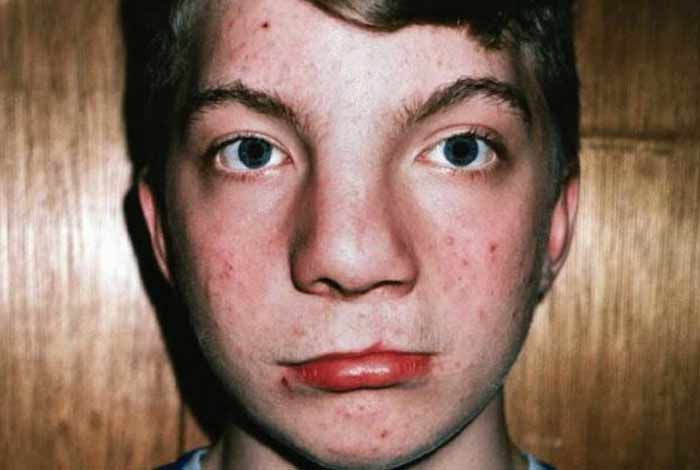
Risk Factors of Aarskog Syndrome
There are several risk factors for Aarskog syndrome that are discussed below:
- Gender: Being a male increases one’s likelihood of having Aarskog syndrome. This is because, men carry only one X chromosome.
- Genetic Makeup: If mother carries a gene for Aarskog syndrome, there are increased chances of the child developing the disorder.

Do I have Aarskog Syndrome?
There are some other conditions, whose symptoms are similar to those of Aarskog syndrome. One may confuse this syndrome with Noonan syndrome. Noonan syndrome is a condition that runs in families. It causes the body parts to develop abnormally. It is linked to defect in several genes. In this, certain proteins involved in growth and development become overactive.
Likewise, Aarskog syndrome and Robinow syndrome have similar symptoms. The latter could affect the development of various body parts. It causes skeletal abnormalities including abnormalities of ribs and spine. Thus, it is important to consult a doctor for the correct diagnosis of the condition.
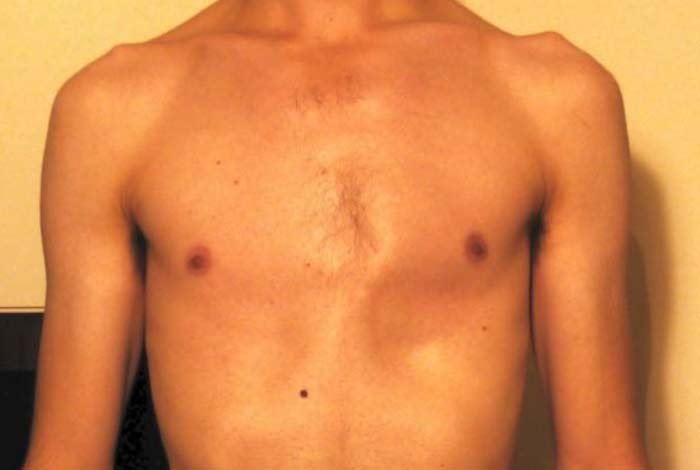
Causes and Prevention of Aarskog Syndrome
The causes and prevention of this condition are discussed below:
Causes of Aarskog Syndrome:
Aarskog Scott syndrome is a X chromosome-linked genetic disorder. It happens as a result of mutation in the faciogenital dysplasia 1 gene (FGD1). X chromosomes are passed from the parent to the child. Males have only one X- chromosome. So, if the mother carries the genetic defect, the male child will more likely to acquire the condition. Females have two X chromosomes. Therefore, if the genetic defect is carried on one X-chromosome, it is most likely to be compensated by the second X-chromosome, which is unaltered. Thus, females have less susceptibility of getting the disorder. However, it is not true in 100% of the cases. Females may be carriers or may develop some mild form of this genetic disorder.
Prevention of Aarskog Syndrome:
There is no sure shot way to prevent Aarskog syndrome. However, women can go through genetic testing for determining whether a mutated FDG1 gene is being carried by them. If the genetic testing shows that the gene is mutated, then the pros and cons of having a child should be appropriately weighed before taking any decision. Prenatal testing gives information as to whether the fetus is a carrier of the genetic defect or not.
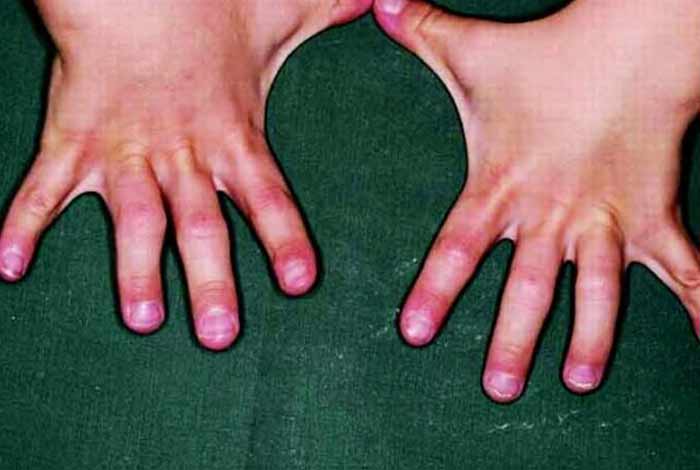
Diagnosis and Tests for Aarskog Syndrome
Diagnosis of Aarskog Syndrome is done on the basis of symptoms of the patients, medical history and examination of the characteristic facial features present in the syndrome. An X-ray may be conducted for assessing face structure and skull. Genetic testing may be done for detection of mutation in the FGD1 gene. Additionally, head X-rays may help determine the severity of malformations due to Aarskog syndrome.

Treatment and Care for Aarskog Syndrome
There is no treatment for Aarskog Syndrome. However, various treatments are aimed at correcting the abnormalities in various body parts like bones and teeth associated with this syndrome. Surgical procedures may be required. For example:
- Orthodontic or Dental Surgery: This is done to repair the impaired teeth and correct abnormal structure of bone.
- Hernia Repair Surgery: This is done by operating on the lump in the groin and the scrotum.
- Testicular Surgery: This is done for descending the undescended testicles in the scrotum.
- Hormone Therapy: This therapy can help in correcting the short body stature.
Other treatments might involve giving assistance for cognitive and developmental delays. One may need to consult a psychiatrist if the child has ADHD. Behavior specialist can also be hired, who would teach how to cope with and raise a child with Aarskog Syndrome.
Children with Aarskog syndrome need special help due to their physical and emotional issues. Children may develop low self-esteem as they notice that they are different from their peers. Parents must remain supportive to the child and also encourage counseling.
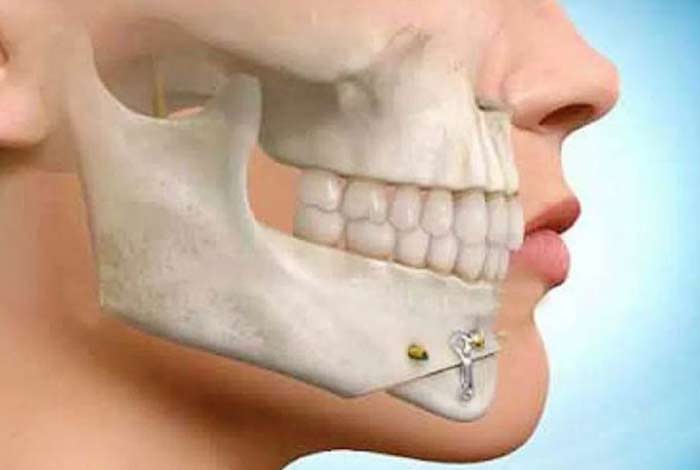
OTC Medications and Self-Management Methods for Aarskog Syndrome
There are no over-the-counter (OTC) drugs available for Aarskog Syndrome. It is a very rare disorder, and so instructions of an expert must be followed for medications and other therapies.
Those suffering with Aarskog Syndrome may be enrolled in support groups. This would help them associate with other people, who are going through similar conditions, and will not make them feel as if they are the only one suffering from the same.
Since it is a genetic disorder, parents must be careful before the birth of the child. Parents must not lose hope and be positive while dealing with the children with this condition. While carrying out activities with the kids, parents must be more cautious. Also, parents should keep in touch with the pediatrician.
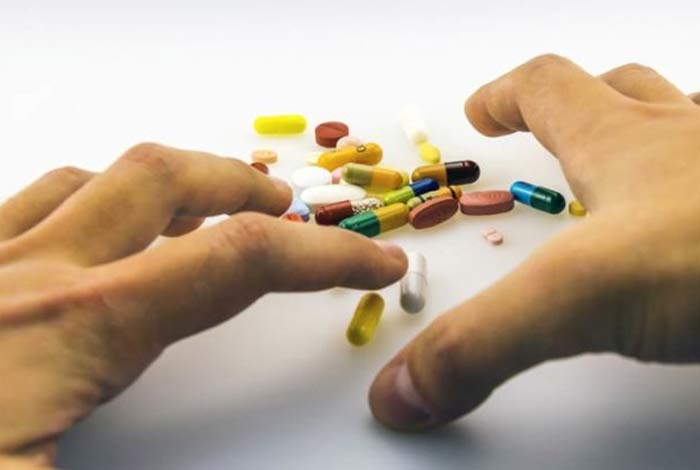
Health Tip by Expert
If it is known that mother is a carrier of or is affected by Aarskog syndrome, and has FDG1 gene mutation, genetic testing must be performed before pregnancy. This might help decide whether to have a child or not.




